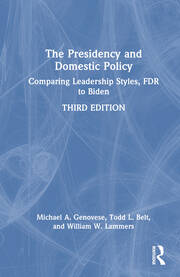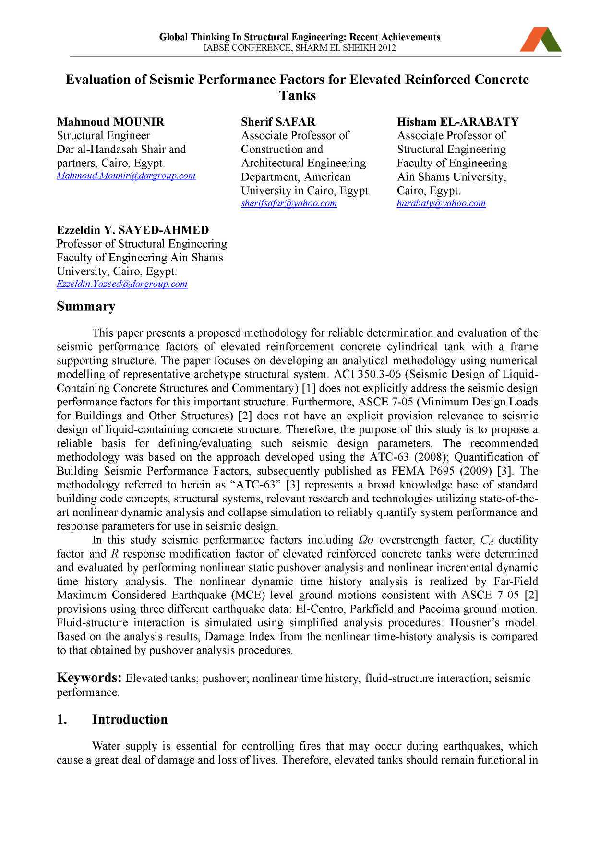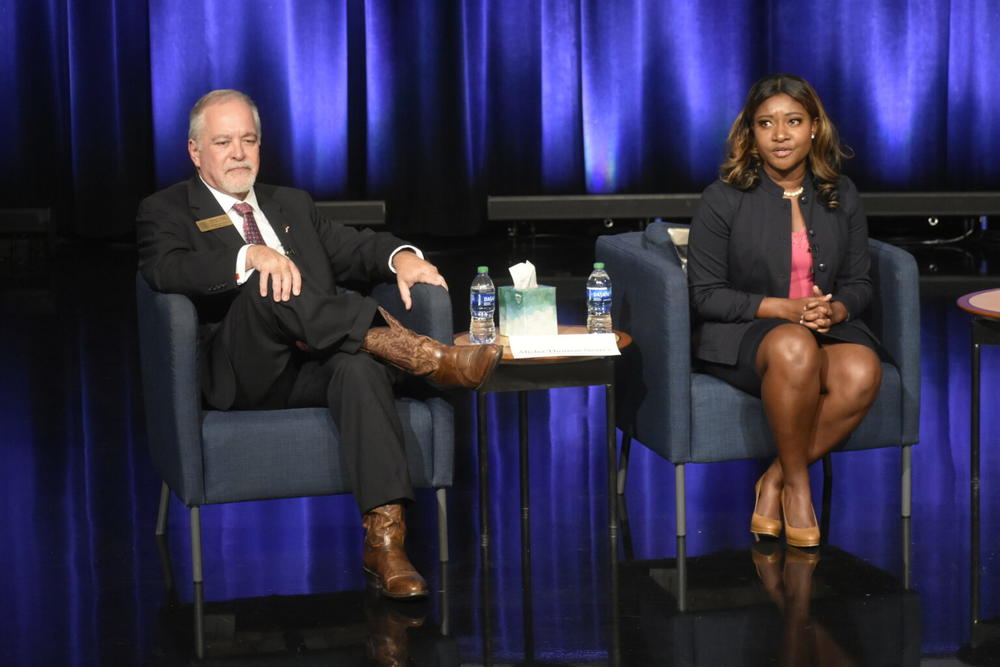The Trump-Biden Presidency: A Look At Their Leadership Styles

Table of Contents
Donald Trump's Leadership Style: Populism and Authoritarianism
Donald Trump's presidency was characterized by a populist and often authoritarian leadership style. This section will explore key aspects of his leadership, including his communication strategies, decision-making processes, and interactions with Congress.
Communication Style: Direct, Confrontational, and Digitally Driven
Trump's communication style was undeniably unique and often controversial. He favored direct, often confrontational language, frequently employing strong rhetoric, nicknames for political opponents, and appeals to populist sentiment.
- Social Media Dominance: His prolific use of Twitter (now X) directly engaged with supporters and critics, bypassing traditional media outlets. This allowed him to control the narrative and bypass fact-checking, sometimes resulting in the spread of misinformation.
- Rally Speeches: Large-scale rallies served as powerful platforms to directly address his base, fostering intense loyalty and reinforcing his populist message.
- Press Conferences: Often contentious and combative, these events frequently overshadowed policy announcements and became focal points for media scrutiny.
- Impact: This approach deeply polarized the American public, generating both unwavering support and fierce opposition, with lasting consequences for political discourse.
Decision-Making Process: Intuition over Deliberation
Trump's decision-making often appeared impulsive, relying heavily on intuition rather than extensive deliberation or expert advice.
- Limited Reliance on Experts: He frequently downplayed or disregarded the counsel of experts, particularly in areas like science and public health, leading to criticism in handling crises such as the COVID-19 pandemic.
- Loyalty over Expertise: Decisions were often influenced by personal loyalty, sometimes leading to controversial appointments and policy choices.
- Examples: His decision to withdraw from the Paris Agreement on climate change and the Iran nuclear deal are often cited as examples of decisions driven by intuition and a disregard for established consensus.
- Consequences: His decision-making process often resulted in unpredictable policy shifts and challenges in implementing coherent strategies.
Relationship with Congress: Confrontation and Limited Bipartisanship
Trump's relationship with Congress, initially Republican-controlled, was marked by both cooperation and significant conflict.
- Tax Cuts: The Tax Cuts and Jobs Act of 2017 represents a major legislative success achieved through collaboration with the Republican-controlled Congress.
- Impeachments: Facing two impeachment inquiries, his relationship with Congress was severely strained, highlighting a deep partisan divide.
- Government Shutdowns: Budget disputes with Congress resulted in government shutdowns, demonstrating a lack of willingness to compromise.
- Impact: His confrontational approach hindered bipartisan cooperation and limited legislative achievements on many key issues.
Joe Biden's Leadership Style: Pragmatism and Consensus-Building
In contrast to Trump's approach, Joe Biden's presidency emphasizes pragmatism, consensus-building, and a more traditional leadership style.
Communication Style: Empathy and Traditional Diplomacy
Biden's communication style prioritizes empathy, building bridges, and fostering unity.
- Traditional Media Engagement: He relies heavily on traditional media outlets such as press conferences and televised addresses to communicate his policies and vision.
- Emphasis on Collaboration: Biden's speeches and public statements often emphasize collaboration, compromise, and the need for unity, aiming to appeal to a broader audience.
- Impact: While less overtly dramatic than Trump's approach, Biden’s communication style has aimed to foster a sense of calm and stability.
Decision-Making Process: Data-Driven and Collaborative
Biden's decision-making is generally characterized by a more deliberative approach, involving extensive consultation with experts and advisors.
- Data-Driven Approach: Decisions are often informed by data analysis and expert assessments, reflecting a commitment to evidence-based policy-making.
- Collaboration with Advisors: Biden involves a broader range of advisors, seeking diverse perspectives and expertise before making decisions.
- Examples: His administration's response to the COVID-19 pandemic, while still facing challenges, involved a heavier reliance on scientific advice compared to the Trump administration.
- Impact: This methodical approach leads to slower decision-making but aims for better-informed, more sustainable policy outcomes.
Relationship with Congress: Bipartisanship and Negotiation
Biden has prioritized bipartisanship and negotiation in his relationship with Congress.
- Infrastructure Investment: The Bipartisan Infrastructure Law, a significant legislative achievement, highlights his success in forging bipartisan alliances.
- Challenges of Divided Government: However, navigating a deeply divided Congress presents significant challenges to his agenda, despite his efforts at compromise.
- Impact: His efforts at bipartisan cooperation have had mixed results, demonstrating the difficulties of bridging the political divide in contemporary American politics.
A Direct Comparison: Key Differences and Similarities
| Feature | Donald Trump | Joe Biden |
|---|---|---|
| Communication | Direct, confrontational, populist | Empathetic, traditional, consensus-building |
| Decision-Making | Impulsive, intuition-based | Deliberative, data-driven, collaborative |
| Congress Relations | Confrontational, limited bipartisanship | Collaborative, focused on bipartisanship |
The contrasting leadership styles of Trump and Biden have significantly impacted both domestic and foreign policy. Trump's populist approach fostered strong loyalty among his base but deeply divided the country. Biden's focus on unity and collaboration aims for broader consensus but faces the challenge of a highly polarized political landscape.
Conclusion: Understanding the Impact of Different Presidential Leadership Styles
The "Trump-Biden Presidency" offers a compelling comparative study of vastly different leadership styles. Trump's populist and often authoritarian style, characterized by direct communication and impulsive decision-making, generated both fervent support and intense opposition. Biden's emphasis on consensus-building, data-driven decisions, and traditional diplomacy presents a contrasting approach aimed at unity but navigating significant political divides. The long-term implications of these differing styles for American politics and society remain to be seen. Continue your exploration of the different Trump-Biden Presidency leadership styles and their implications for the future.

Featured Posts
-
 Exploring Androids Refreshed Design Language
May 16, 2025
Exploring Androids Refreshed Design Language
May 16, 2025 -
 Watch San Diego Padres Baseball Cord Cutting Guide For 2025
May 16, 2025
Watch San Diego Padres Baseball Cord Cutting Guide For 2025
May 16, 2025 -
 Assessing Zach Steffens Performance In Earthquakes Loss To Rapids
May 16, 2025
Assessing Zach Steffens Performance In Earthquakes Loss To Rapids
May 16, 2025 -
 Biden Trump Contrasting Visions For Americas Future
May 16, 2025
Biden Trump Contrasting Visions For Americas Future
May 16, 2025 -
 Ukraina Pod Massirovannym Raketnym Udarom Rossii Bolee 200 Tseley
May 16, 2025
Ukraina Pod Massirovannym Raketnym Udarom Rossii Bolee 200 Tseley
May 16, 2025
